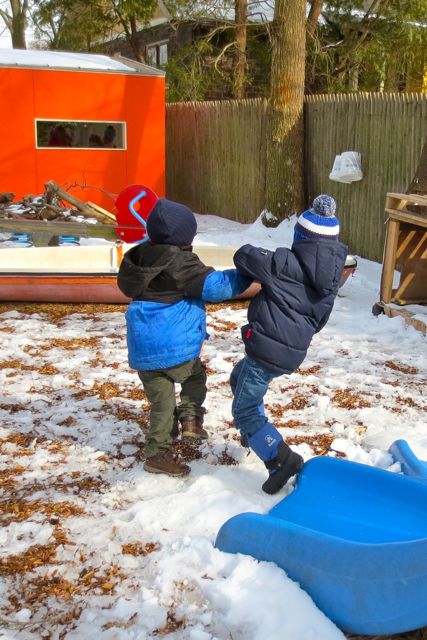Passing the Torch
He went down hard and I saw that his ankle turned and curved as he went. I stepped that much closer so that I could gauge his response...it wasn't my fall and wasn't my ankle. I don't roughhouse (what we call rough and tumble) or fight or wrestle (what the children this year call it). He does and that is what he and a friend were doing just before he went down. I am at a time in my life that falling, like that, would be alarming, not in terms of the suddenness of it, but in terms of actual hurt. I would have to do a systems check for injury. And now it is time for him to do his systems check. While he does his, I do my own, deflecting my own imagination and heightened sense of fear away from his by knowing that with children, it is more often the suddenness of not so much the fall, but the abrupt change in momentum -- I was up. I felt strong. I lost control. I am down.
He began to cry.
Since I had seen his ankle twist, I bent down and gently held his ankle and narrated his fall, "You were roughhousing..." His friend interrupted, sighing, "You mean fighting." The children have infinite patience with me and my inability to use that word. "Okay, you were fighting and your feet went out from under you and you fell. How is your body?"
"He pushed me!"
Ah, indeed and there it is, his wail and his tears emphasized his profound feeling of loss.
After acknowledging his grief and making space for his fight-partner to check on him, I started to go into the almost-chant of explanations about the rules of roughhousing. Okay, okay, the rules of fight and you know you just went to the "rules of fight club". I always do and now you know how my adult lens impacts the simplest things. I didn't get into the full swing of things before one of the other children who has spent most of the year keenly watching the roughhousing stepped in.
"Let me show you how to do it," he said.
So to back up a little. We do not always have roughhousing -- meaning there are some years and some children who do not engage in this kind of play at school. When it does happen, we make it part of our teaching...this is how you fall, this is how you push, this is how you call, "stop", etc. The teaching varies slightly, depending on the children's goals and needs, but of course there is modeling and practice, and together, we shape and revisit the rules.
The torch for modeling the play is the one that was passed and held by this child and it gave the adults watching pause -- not the children, they took it in stride and turned to watch, tears already drying on the cheeks of the one, as our torch-bearer called over his "gentle friend" to help model out his lesson.
"This is how you wrestle," he instructed, "Watch."
One of the co-opers and I looked at each other, knowing that this was a moment.
The moment was so jam-packed with confidence. Comparing this confidence with this child's stance about roughhousing from the beginning of the school year was what gave us pause. In the beginning, he was frustrated about losing his close friends to it. He did not feel confident enough to join the game, so he created his own game, "exercise." Then his mothers practiced with him at home. They practiced gentle resistance, instinctively understanding both his need to join and his need to balance being in control and out of control, building his confidence over time through practice.
His mothers created a safe time and place and eventually, during a play date, practiced gentle wrestling with this one particular friend. The children discovered a new facet of their already close friendship and eventually they brought this "gentle wrestling" to school. So quiet was its introduction that you had to be paying attention to its presence, but I knew from talking with his mothers the underlying support that made this possible.
And now he had something to share. The torch passed. "This is how you wrestle," he said, "Watch."
The pair proceeded to wrestle, but interestingly, the gentle partner did not know the point of the demonstration and did not go down. He was doing what he always does during their matches, providing a kind of shifting wall of gentle resistance. Our torch-bearer remained unperturbed and kept up the demonstration. We all watched and waited. He kept up his efforts to push him down. They eventually both went down.
The torch-bearer had to untangle himself and he did so with as much grace and authority as the situation could allow.
"And that's how you do it!" he declared.

